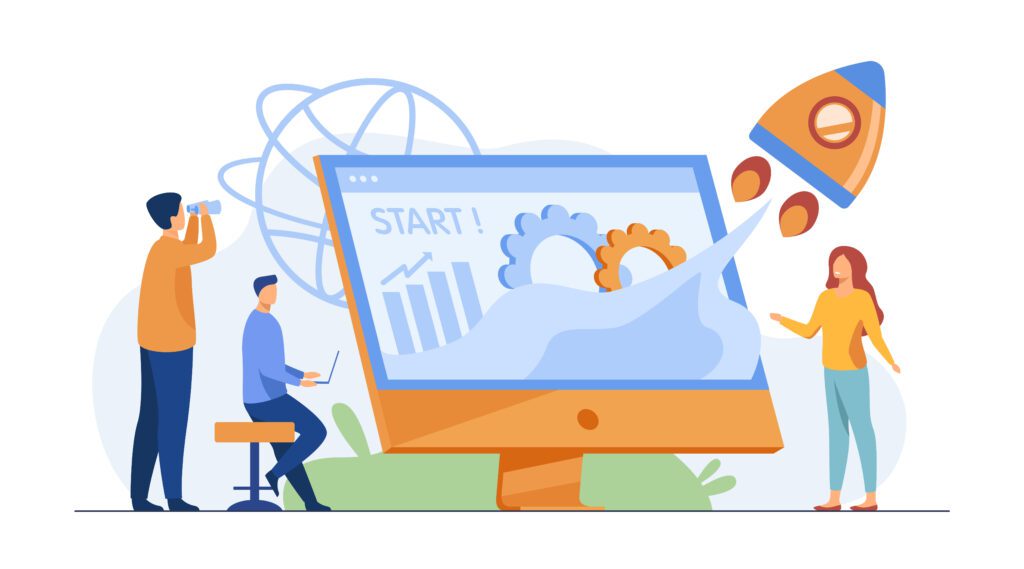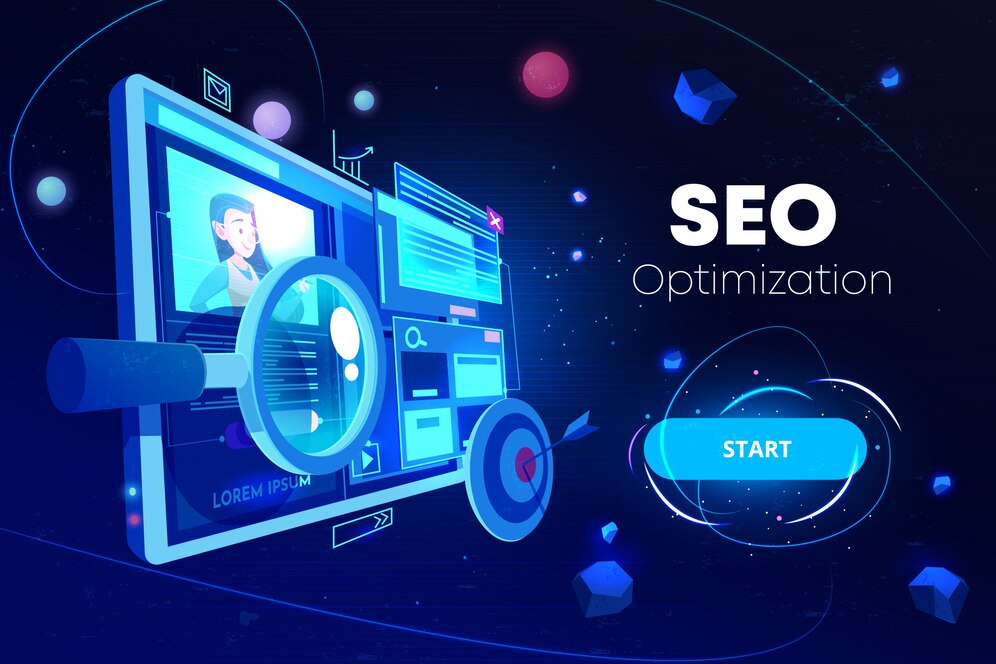Learn SEO: Boost Your Website’s Ranking Fast!

Table of Contents
1. Introduction to SEO

What is SEO?
Search Engine Optimization (SEO) is the practice of optimizing a website to rank higher in search engine results pages (SERPs). This involves a variety of techniques and strategies aimed at improving the website’s visibility and attracting more organic (non-paid) traffic from search engines like Google, Bing, and Yahoo. SEO encompasses several aspects, including keyword research, on-page optimization, technical SEO, and off-page SEO.
History and Evolution of SEO
The history of SEO dates back to the early 1990s when the first search engines were launched. As the internet grew, so did the need for search engines to index and rank the ever-increasing number of websites. The introduction of Google’s PageRank algorithm in 1998 revolutionized SEO by prioritizing high-quality, relevant content. Over the years, SEO has evolved significantly, with search engines continuously updating their algorithms to provide better search results and combat black hat SEO practices.
Importance of SEO in Digital Marketing
SEO is a critical component of digital marketing because it helps businesses increase their online visibility, drive organic traffic, and ultimately boost conversions and revenue. Unlike paid advertising, which can be costly and temporary, SEO provides long-term benefits by improving a website’s search engine ranking through organic means. Effective SEO strategies can help build brand credibility, enhance user experience, and ensure a competitive edge in the digital marketplace.
2. Fundamentals of SEO

How Search Engines Work
Search engines use complex algorithms to crawl, index, and rank websites. Crawling involves scanning the web for new and updated content using bots known as spiders or crawlers. Indexing is the process of storing and organizing the content found during crawling. When a user conducts a search, the search engine retrieves the most relevant results from its index based on various ranking factors, such as keyword relevance, site authority, and user experience.
Types of SEO: On-Page, Off-Page, Technical
- On-Page SEO: Involves optimizing individual web pages to improve their search engine ranking. This includes optimizing title tags, meta descriptions, headers, and content.
- Off-Page SEO: Focuses on building a website’s authority and reputation through external factors like backlinks, social media engagement, and guest blogging.
- Technical SEO: Refers to optimizing the website’s backend to improve its performance, speed, mobile-friendliness, and crawlability.
White Hat vs. Black Hat SEO
- White Hat SEO: Involves using ethical and legitimate techniques to improve a website’s ranking. This includes following search engine guidelines, creating high-quality content, and building natural backlinks.
- Black Hat SEO: Involves using manipulative and unethical techniques to achieve quick results. This includes keyword stuffing, cloaking, and using private link networks. Black hat SEO can lead to penalties or even a complete ban from search engines.
3. Keyword Research
What is Keyword Research?
Keyword research is the process of identifying and analyzing the terms and phrases that people use to search for information online. It is a crucial step in SEO because it helps marketers understand what their target audience is looking for and how to optimize their content to meet those needs.
Tools for Keyword Research
Several tools can assist in keyword research, including:
- Google Keyword Planner: Offers insights into keyword search volume and competition.
- SEMrush: Provides comprehensive keyword analysis, including keyword difficulty and competitive analysis.
- Ahrefs: Known for its extensive keyword database and competitive research features.
- Moz Keyword Explorer: Offers keyword suggestions and analysis to help find the best keywords for your content.
Long-Tail Keywords vs. Short-Tail Keywords
- Long-Tail Keywords: Phrases that are longer and more specific, often resulting in lower search volume but higher conversion rates. For example, “best vegan restaurants in New York City.”
- Short-Tail Keywords: Broader, more general phrases with higher search volume but lower conversion rates. For example, “vegan restaurants.”
How to Choose the Right Keywords
Choosing the right keywords involves balancing search volume, competition, and relevance to your content. It’s essential to focus on keywords that your target audience is likely to use and that align with your business goals. Using a mix of long-tail and short-tail keywords can help capture a broader audience while also targeting specific, high-intent searches.
4. On-Page SEO

Title Tags and Meta Descriptions
Title tags and meta descriptions are crucial elements of on-page SEO. Title tags should be concise, descriptive, and include relevant keywords. Meta descriptions provide a brief summary of the page content and should be compelling to encourage click-throughs from search engine results pages.
Header Tags (H1, H2, H3, etc.)
Header tags help organize content and make it more readable for both users and search engines. The H1 tag represents the main heading of a page, while H2, H3, and other subheadings break down the content into smaller, manageable sections. Proper use of header tags can improve user experience and help search engines understand the page structure.
Content Optimization
Content optimization involves creating high-quality, relevant content that satisfies user intent and includes targeted keywords naturally. This includes using proper formatting, such as bullet points, lists, and images, to enhance readability and engagement.
Image Optimization
Optimizing images involves reducing file sizes for faster loading times, using descriptive file names and alt text, and ensuring images are responsive for different devices. Proper image optimization can improve user experience and contribute to better search engine rankings.
Internal Linking
Internal linking helps search engines understand the hierarchy and relationship between different pages on your website. It also helps users navigate your site more easily and discover related content. Strategic internal linking can improve page authority and boost SEO.
5. Off-Page SEO
What is Off-Page SEO?
Off-Page SEO refers to actions taken outside of your website to improve its search engine rankings. This primarily involves building backlinks from other reputable websites, which signals to search engines that your content is valuable and authoritative.
Backlinking Strategies
Effective backlinking strategies include:
- Guest Blogging: Writing articles for other websites in exchange for a backlink to your site.
- Content Marketing: Creating high-quality content that others naturally want to link to.
- Social Media: Promoting your content on social media to increase visibility and attract backlinks.
- Influencer Outreach: Collaborating with influencers to gain exposure and backlinks from their followers.
Social Media and SEO
While social media signals do not directly impact search engine rankings, a strong social media presence can drive traffic to your website, increase brand awareness, and potentially lead to more backlinks.
Guest
Blogging Guest blogging involves writing articles for other websites within your industry or niche. This can help you reach a broader audience, establish authority, and gain high-quality backlinks.
6. Technical SEO
Website Speed and Performance
Website speed is a critical ranking factor. Slow-loading websites can lead to higher bounce rates and lower search engine rankings. Optimizing website speed involves compressing images, minimizing code, and leveraging browser caching.
Mobile-Friendliness
With the increasing use of mobile devices, having a mobile-friendly website is essential. Responsive design, fast loading times, and easy navigation on mobile devices can improve user experience and search engine rankings.
XML Sitemaps
XML sitemaps help search engines understand the structure of your website and find all relevant pages. Submitting an XML sitemap to search engines can improve crawlability and indexing.
Robots.txt
The robots.txt file instructs search engine crawlers on which pages to crawl and index. Properly configuring the robots.txt file can prevent search engines from indexing duplicate or irrelevant pages.
Structured Data Markup
Structured data markup, also known as schema markup, helps search engines understand the content of your website. This can enhance search engine results with rich snippets, such as star ratings, reviews, and event details, improving click-through rates.
7. Content Creation and SEO
Importance of Quality Content
High-quality content is the cornerstone of effective SEO. It provides value to users, answers their questions, and satisfies their search intent. Quality content is more likely to be shared, linked to, and ranked higher in search engine results.
Blog Posts and Articles
Regularly publishing blog posts and articles can drive traffic, build authority, and keep your audience engaged. Each piece of content should be well-researched, informative, and optimized for relevant keywords.
Video Content
Video content is becoming increasingly popular and can significantly boost SEO. Videos can improve user engagement, increase time spent on your site, and attract backlinks. Optimizing video content with descriptive titles, tags, and transcripts can enhance its visibility in search results.
Infographics
Infographics are a visual way to present information and data. They are highly shareable and can attract backlinks from other websites. Optimizing infographics with descriptive alt text and embedding codes can improve SEO.
User-Generated Content
User-generated content, such as reviews, comments, and social media posts, can enhance your website’s credibility and provide fresh, relevant content. Encouraging and showcasing user-generated content can boost SEO and build a sense of community around your brand.
8. SEO Tools and Software
Google Analytics
Google Analytics is a powerful tool for tracking and analyzing website traffic. It provides insights into user behavior, traffic sources, and conversions, helping you make data-driven decisions to improve your SEO strategy.
Google Search Console
Google Search Console allows you to monitor and troubleshoot your website’s presence in Google search results. It provides data on search queries, backlinks, crawl errors, and more, helping you optimize your site for better performance.
SEMrush
SEMrush is an all-in-one SEO tool that offers keyword research, competitor analysis, site audits, and more. It provides valuable insights to help you improve your website’s visibility and rankings.
Ahrefs
Ahrefs is known for its extensive backlink analysis and competitive research features. It provides detailed information on backlinks, keywords, and content performance, helping you develop effective SEO strategies.
Moz
Moz offers a range of SEO tools, including keyword research, site audits, and rank tracking. Its user-friendly interface and comprehensive features make it a popular choice for SEO professionals.
9. Measuring SEO Success
Key Performance Indicators (KPIs)
Key Performance Indicators (KPIs) are metrics used to measure the success of your SEO efforts. Common SEO KPIs include organic traffic, keyword rankings, conversion rates, and backlink quality.
SEO Audits
Regular SEO audits help identify issues and areas for improvement on your website. This includes checking for broken links, duplicate content, slow loading times, and other factors that can impact your search engine rankings.
Traffic Analysis
Analyzing website traffic helps you understand how users are finding and interacting with your site. This includes tracking metrics like bounce rate, average session duration, and pages per session.
Conversion Rate Optimization (CRO)
Conversion Rate Optimization (CRO) involves optimizing your website to increase the percentage of visitors who complete a desired action, such as making a purchase or filling out a form. This can involve A/B testing, improving user experience, and enhancing calls-to-action.
10. Advanced SEO Techniques
Voice Search Optimization
With the rise of voice-activated assistants like Siri, Alexa, and Google Assistant, optimizing for voice search is becoming increasingly important. This involves using natural language keywords, providing concise answers to common questions, and ensuring your website is mobile-friendly.
Local SEO
Local SEO focuses on optimizing your website to attract local customers. This includes creating and optimizing a Google My Business profile, building local citations, and encouraging customer reviews.
International SEO
International SEO involves optimizing your website for different languages and regions. This includes using hreflang tags, creating localized content, and ensuring your website is accessible to international audiences.
SEO for E-commerce
E-commerce SEO involves optimizing online stores to rank higher in search results. This includes optimizing product pages, improving site speed, and implementing structured data for products.
11. SEO Trends and Future Predictions
AI and Machine Learning in SEO
Artificial Intelligence (AI) and machine learning are transforming SEO by enabling more sophisticated search algorithms. AI-powered tools can analyze vast amounts of data to provide insights and recommendations for improving SEO.
The Role of Content in the Future of SEO
Content will continue to play a crucial role in SEO. High-quality, relevant content that provides value to users will always be essential for ranking well in search engine results.
Predictive Search
Predictive search uses AI to anticipate user queries and provide relevant results before the user finishes typing. This can improve user experience and drive more targeted traffic to your website.
The Future of Search Engines
The future of search engines will likely involve more personalized and context-aware search results. As technology advances, search engines will become better at understanding user intent and delivering more accurate and relevant results.
12. Common SEO Mistakes to Avoid
Keyword Stuffing
Keyword stuffing involves overloading a webpage with keywords in an attempt to manipulate search rankings. This can result in a poor user experience and penalties from search engines. Instead, focus on using keywords naturally and providing valuable content.
Ignoring Mobile Optimization
With the majority of internet users accessing websites from mobile devices, ignoring mobile optimization can significantly impact your SEO. Ensure your website is responsive, fast, and easy to navigate on mobile devices.
Duplicate Content
Duplicate content refers to identical or very similar content appearing on multiple web pages. This can confuse search engines and dilute your rankings. Use canonical tags to indicate the preferred version of a page and avoid publishing duplicate content.
Poor Quality Backlinks
Not all backlinks are created equal. Poor quality backlinks from spammy or irrelevant websites can harm your SEO. Focus on building high-quality, relevant backlinks from reputable sources.
13. SEO Case Studies
Successful SEO Campaigns
Analyzing successful SEO campaigns can provide valuable insights and inspiration for your own strategies. Look for case studies that highlight specific tactics and techniques that led to significant improvements in search rankings and traffic.
Lessons Learned from SEO Failures
Understanding why certain SEO campaigns failed can help you avoid similar mistakes. Look for case studies that provide detailed analysis of what went wrong and how to prevent those issues in your own SEO efforts.
14. SEO Best Practices
Keeping Up with Algorithm Changes
Search engine algorithms are constantly evolving, so it’s essential to stay up-to-date with the latest changes and trends. Follow industry blogs, attend conferences, and participate in online communities to stay informed.
Continuous Learning and Adaptation
SEO is a dynamic field that requires continuous learning and adaptation. Stay curious, experiment with new techniques, and be willing to adjust your strategies based on data and feedback.
Ethical SEO Practices
Always adhere to ethical SEO practices and avoid shortcuts or manipulative tactics. Focus on providing value to your audience, creating high-quality content, and building genuine relationships with other websites.
15. The Role of User Experience (UX) in SEO
Understanding User Experience
User experience (UX) refers to how users interact with and perceive your website. Good UX ensures that visitors find your site easy to navigate, engaging, and useful. Elements of UX include website design, usability, accessibility, and overall satisfaction.
The Connection Between UX and SEO
Search engines like Google prioritize websites that offer a positive user experience. Factors such as site speed, mobile-friendliness, and easy navigation can significantly impact your search engine rankings. A well-designed website that meets users’ needs can reduce bounce rates and increase time on site, both of which are positive signals to search engines.
Improving Website Usability
To enhance usability:
- Simplify Navigation: Use a clear, intuitive menu structure.
- Optimize for Speed: Ensure your site loads quickly by compressing images and minimizing code.
- Make Content Readable: Use readable fonts, appropriate text size, and sufficient contrast between text and background.
- Provide Clear Calls-to-Action (CTAs): Guide users towards desired actions with prominent and compelling CTAs.
Accessibility and SEO
Making your website accessible to all users, including those with disabilities, is crucial. Accessibility features, such as alt text for images, keyboard navigation, and screen reader compatibility, not only improve UX but also enhance SEO by making your content available to a wider audience.
16. Local SEO Strategies
Optimizing for Local Searches
Local SEO focuses on improving your visibility for location-based searches. This is especially important for businesses that serve specific geographic areas.
Google My Business
Creating and optimizing a Google My Business (GMB) profile is essential for
local SEO. Ensure your profile includes:
- Accurate Business Information: Name, address, phone number (NAP), and business hours.
- Categories and Services: Select relevant categories and describe your services.
- Photos and Reviews: Upload high-quality photos of your business and encourage customers to leave reviews.
Local Citations
Local citations are mentions of your business on other websites, such as online directories and review sites. Consistent and accurate citations can improve your local search rankings and drive more traffic to your website.
Customer Reviews
Encouraging and responding to customer reviews can boost your local SEO. Positive reviews signal to search engines that your business is reputable and trustworthy. Responding to reviews, both positive and negative, shows that you value customer feedback and are committed to providing excellent service.
By following the comprehensive strategies outlined in this guide, you can enhance your website’s visibility, attract more organic traffic, and achieve long-term success in the ever-evolving field of SEO.




Hello!
Do you want to become the best SEO specialist and link builder or do you want to outpace your competitors?
Premium base for XRumer
$119/one-time
Get access to our premium database, which is updated monthly! The database contains only those resources from which you will receive active links – from profiles and postings, as well as a huge collection of contact forms. Free database updates. There is also the possibility of a one-time purchase, without updating the databases, for $38.
Fresh base for XRumer
$94/one-time
Get access to our fresh database, updated monthly! The database includes active links from forums, guest books, blogs, etc., as well as profiles and activations. Free database updates. There is also the possibility of a one-time purchase, without updating the databases, for $25.
GSA Search Engine Ranker fresh verified link list
$119/one-time
Get access to our fresh database, updated monthly! The fresh database includes verified and identified links, divided by engine. Free database updates. There is also the possibility of a one-time purchase, without updating the databases, for $38.
GSA Search Engine Ranker activation key
$65
With GSA Search Engine Ranker, you’ll never have to worry about backlinks again. The software creates backlinks for you 24 hours a day, 7 days a week. By purchasing GSA Search Engine Ranker from us, you get a quality product at a competitive price, saving your resources.
To contact us, write to telegram https://t.me/DropDeadStudio
Pingback: Top SEO Optimization Tools to Boost Your Website Ranking